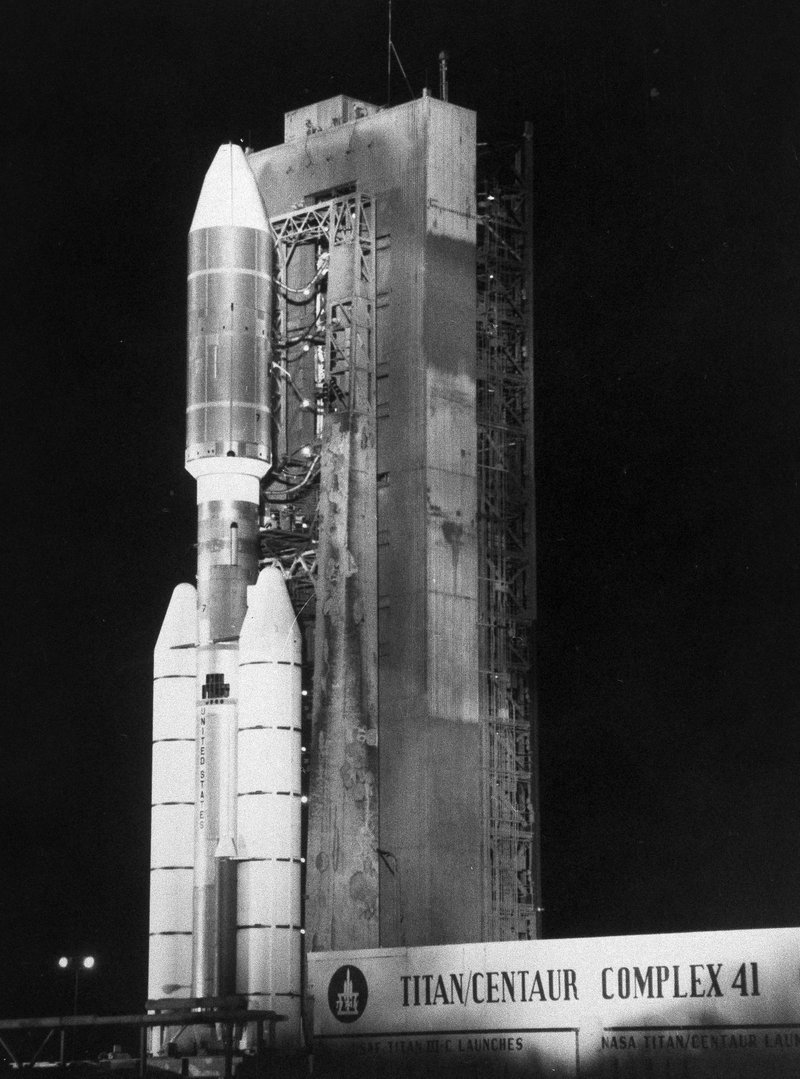CAPE CANAVERAL, Fla. -- Forty years after blasting off, Earth's most distant ambassadors -- the twin Voyager spacecraft -- are carrying sounds and music of our planet ever deeper into the cosmos.
Think of them as messages in bottles meant for anyone -- or anything -- out there.
Today marks the 40th anniversary of NASA's launch of Voyager 2, now almost 11 billion miles distant. It departed from Cape Canaveral on Aug. 20, 1977, to explore Jupiter and Saturn.
Voyager 1 followed a few weeks later and is ahead of Voyager 2. It's humanity's farthest spacecraft -- at 13 billion miles away -- and is the world's only craft to reach interstellar space, the vast, mostly empty space between star systems. Voyager 2 is expected to cross that boundary over the next few years.
Each carries a 12-inch, gold-plated copper phonograph record -- there were no CDs or MP3s at launch time -- containing messages from Earth: Beethoven's Fifth, chirping crickets, a baby's cry, a kiss, wind and rain, a thunderous moon rocket launch, African pygmy songs, Solomon Island panpipes, a Peruvian wedding song and greetings in dozens of languages. There are also more than 100 electronic images on each record showing 20th-century life, traffic jams and all.
NASA is marking the anniversary of its back-to-back Voyager launches with tweets, reminisces and still-captivating photos of Jupiter, Saturn, Uranus and Neptune taken by the Voyagers from 1979 through the 1980s.
Public television is also paying tribute with a documentary, The Farthest - Voyager in Space, airing on PBS at 8 p.m. Wednesday.
The two-hour documentary describes the behind-the-scenes effort that culminated in the fruitful missions to our solar system's outer planets and beyond. More than 20 team members are interviewed, many of them long retired. There's original TV footage throughout, including a look back at the late astronomer Carl Sagan of the 1980 PBS series Cosmos.
Planetary scientist Carolyn Porco -- who joined Voyager's imaging team in 1980 -- puts the mission up there with man's first moon landing.
"I consider Voyager to be the Apollo 11 of the planetary exploration program. It has that kind of iconic stature," Porco, a visiting scholar at the University of California, Berkeley, said Thursday.
It was Sagan who, in large part, got a music record aboard each Voyager. NASA was reluctant and did not want the records eclipsing the scientific goals. Sagan finally prevailed, but he and his fellow record promoters had less than two months to rustle everything up.
For science writer Timothy Ferris, who helped put together the records, it's time more than distance that makes the whole idea of finders-keepers so incomprehensible.
A billion years from now, "Voyager could be captured by an advanced civilization of beings that don't exist yet. ... It's literally imponderable what will happen to the Voyagers," he said.
A Section on 08/20/2017

